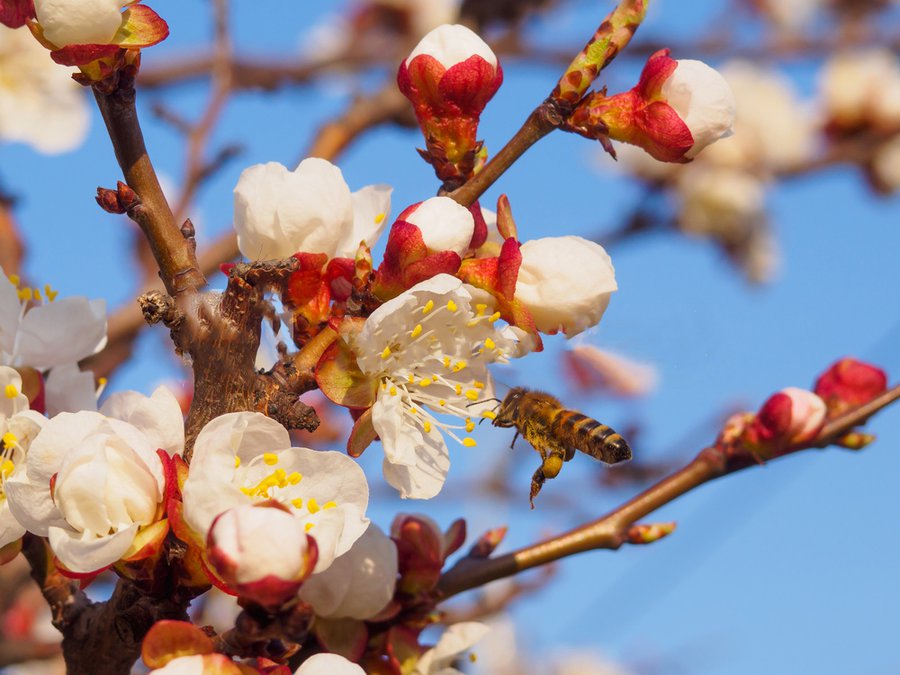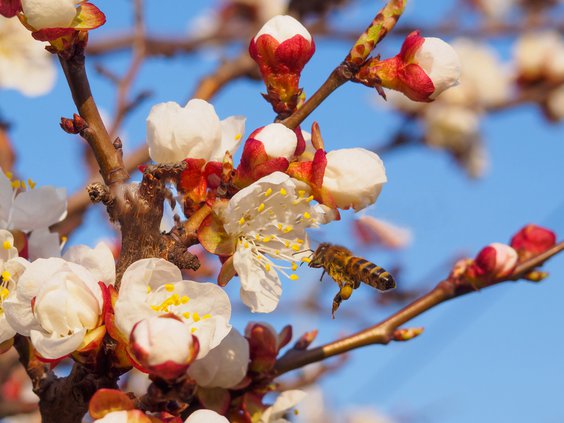It’s no secret that almonds reign supreme when it comes to crops in Stanislaus County, but it can be easy to forget that pollinators like bees and butterflies are essential for the orchards to thrive. A diverse coalition announced this week is aiming to protect the vital, six-legged friends of farmers in order to make sure that the state’s robust farming industry continues to provide.
The California Pollinator Coalition, convened by the Pollinator Partnership, the California Department of Food and Agriculture and the Almond Board of California, is made up of more than 20 organizations which all represent the large majority of the state’s crop and range land. The coalition has pledged to increase habitat for pollinators — a classification which also includes beetles, wasps, moths and other insects — and increase collaboration between the agriculture and conservation groups for the benefit of biodiversity and food production.
“The CPC is designed to be truly a voluntary partnership, adaptively managing as we go forward, building trust and focusing on the many mutual goals between agriculture and conservation,” said Laurie Davies Adams, President and CEO of Pollinator Partnership, during a virtual press conference on Wednesday.
According to Adams, the collaboration brought forth through the CPC will result in on-the-ground improvements, advanced technical guidance, funded research, the documentation of relevant case studies and tracked progress toward overall healthier pollinator habitats. The effort will benefit both growers and the environment, she said, through means like increasing biodiversity, improving pollinator success, sequestering more carbon in soil and more.
So, how will it work?
The new coalition is going to prepare grower-friendly guidance to build and maintain pollinator habitats on farms and ranches which will promote voluntary, incentive-based habitat establishment and integrated pest management practices. The CPC will also conduct research and disseminate relevant science by monitoring outcomes through metrics like adoption rates and the effectiveness of these practices.
As the coalition learns to trust each other, the hope is that more organizations will join and the effort will expand throughout the state. The coalition also hopes their success will serve as a model for even more collaboration among interests who have not always been aligned, but who are willing to come together in partnership to confront common challenges.
“It’s so important when we think about the challenges before us: a changing climate, loss of biodiversity and the critical importance of the health of our pollinators for food and our environment. There’s no better way for us to come together than with this remarkable coalition,” CDFA Secretary Karen Ross said. “It seems obvious to many on the outside, but it’s really not that obvious that we should all be working together and that bringing this group together gives us a new model of what we can do.”
California is home to more than 1,600 native bees and hundreds of other species of pollinating insects. Globally, pollinators provide service to more than 180,000 different plant species, more than 1,200 crops, and are responsible for producing an estimated one out of every three bites of food. They sustain ecosystems and support natural resources, all while adding $217 billion to the global economy each year. According to the 2019 Stanislaus County Agricultural Report, almond pollination was the eighth-most profitable commodity locally, valued at nearly $84 million.
But pollinator populations are declining and often suffer from the same challenges as California's agriculture.
"This will not be an easy or quick fix," said Josette Lewis, Chief Scientific Officer of the Almond Board of California. "It will require a robust and sustained effort, but we are determined to be part of the solution. Almond growers and many other farmers depend on pollinators to produce a crop and pollinators depend on us to provide safe habitat. Working lands can and should be part of the solution."
While just beginning its work, the Coalition is catalyzing new collaborations and continuing to recruit partners who understand the urgency and share the common goal of supporting both the health of pollinators and agriculture. Current California Pollinator Coalition membership includes:
· Agricultural Council of California
· Almond Alliance of California
· Almond Board of California
· California Alfalfa and Forage Association
· California Association of Pest Control Advisers
· California Association of Resource Conservation Districts
· California Cattlemen's Association
· California Citrus Mutual
· California Department of Food and Agriculture
· California Farm Bureau Federation
· California State Beekeepers Association
· California Sustainable Winegrowing Alliance
· Environmental Defense Fund
· Monarch Joint Venture
· Monarch Watch
· Pollinator Partnership
· Project Apis m.
· University of California Agriculture and Natural Resources
· USDA Natural Resources Conservation Service of California
· Western Growers
· Dr. Neal Williams, University of California, Davis





